 Itis only May, but here in the Pilot’s Lounge at the virtual airport, a few of thepilots are already making plans to go to Oshkosh, Wis., to the annual EAAAirVenture blowout the end of July. Some are checking out their camping gear andperusing Sport Aviation magazine to see what is going on and when they can plantheir vacation days to be there at the right time. Lounge visitor Jim isplanning to drive over in his RV rather than flying his prize-winning Ercoupe sohe can make an extended stay in comfort because he is one of the volunteers whomake the convention work. He volunteered for the first time last year and foundthat working for three or four hours in addition to the usual looking atairplanes, wandering through the vendor displays and watching the airshow addedgreatly to his enjoyment.
Itis only May, but here in the Pilot’s Lounge at the virtual airport, a few of thepilots are already making plans to go to Oshkosh, Wis., to the annual EAAAirVenture blowout the end of July. Some are checking out their camping gear andperusing Sport Aviation magazine to see what is going on and when they can plantheir vacation days to be there at the right time. Lounge visitor Jim isplanning to drive over in his RV rather than flying his prize-winning Ercoupe sohe can make an extended stay in comfort because he is one of the volunteers whomake the convention work. He volunteered for the first time last year and foundthat working for three or four hours in addition to the usual looking atairplanes, wandering through the vendor displays and watching the airshow addedgreatly to his enjoyment.
 Some of the couch potato types here in the Lounge aren’t all that sure about thevolunteer idea; after all, they only go for two or three days, what can they do?Why waste valuable time at AirVenture that could be spent drooling over thelatest avionics or the hottest new homebuilt?
Some of the couch potato types here in the Lounge aren’t all that sure about thevolunteer idea; after all, they only go for two or three days, what can they do?Why waste valuable time at AirVenture that could be spent drooling over thelatest avionics or the hottest new homebuilt?
There was quite a bit of discussion back and forth. As usual, I listened but Ialso thought about the brief time I spent as a volunteer at Flight LineOperations last year and working with AVweb the last two years. I found myselfspeaking in support of Jim, agreeing with his thesis that Oshkosh was even moreenjoyable when you get involved in some way in making it happen.
Why Volunteer?
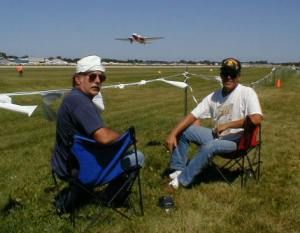 To the cynic, volunteering is foolish:If the job is importantenough to do, it is worth paying someone to do it. The pragmatic response tothat is to point out that the resultant employee may not be terribly motivatedto do more than the minimum necessary, something which can be, at the veryleast, unpleasant for aviators, and, at most, potentially dangerous.
To the cynic, volunteering is foolish:If the job is importantenough to do, it is worth paying someone to do it. The pragmatic response tothat is to point out that the resultant employee may not be terribly motivatedto do more than the minimum necessary, something which can be, at the veryleast, unpleasant for aviators, and, at most, potentially dangerous.
As pilots, most of us are aware that we did not get to where we are without thehelp of others. There was the flight instructor who spent extra time after theclock stopped running at the end of the lesson to just talk airplanes and flyingand added so much to your learning. Or the experienced charter pilot who gentlygave you some guidance when you were a hot-headed, 300-hour pilot and thoughtyou knew everything. That guidance kept you from killing yourself a few weekslater when you made that decision not to go a couple hundred feet below theminimum descent altitude on an instrument approach and went to your alternate.The next day it was clear. On the way into your original destination you noticedthe transmission tower under the approach path that you might very well have hithad you gone ahead and busted the altitude as you would have without the quietadvice. Or the rides you got with friendly, more experienced pilots that allowedyou to pick up good practices and avoid the bad ones.
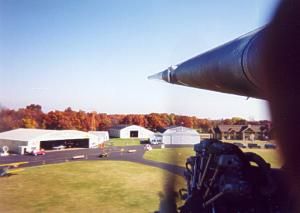 As pilots, we have been given wonderful gifts. We have seen sights few humansever get to witness and done things the ancients would have given kingdoms ofwealth to experience. When we pause in our habitual complaining about the costof flying, the most recent idiocy of the FAA and that the airplanes should befaster, we realize that we could not have done what we have done, even at themost basic level of soloing an airplane for the first time, without the help ofothers in aviation. Your trip to AirVenture is a good way to give somethingback. Not only is it the right thing to do, you may very well find you get evenmore from your visit than ever before.
As pilots, we have been given wonderful gifts. We have seen sights few humansever get to witness and done things the ancients would have given kingdoms ofwealth to experience. When we pause in our habitual complaining about the costof flying, the most recent idiocy of the FAA and that the airplanes should befaster, we realize that we could not have done what we have done, even at themost basic level of soloing an airplane for the first time, without the help ofothers in aviation. Your trip to AirVenture is a good way to give somethingback. Not only is it the right thing to do, you may very well find you get evenmore from your visit than ever before.
On top of it all, you will definitely have the chance to meet a number of peoplewho are interested in the same thing you are, aviating. That’s a reward initself, because a certain number of the folks you meet will prove to be leastpretty interesting, as it’s been my contention for years that aviation has morecharacters per capita than any other human endeavor.
OK, I Want To Volunteer, Now What?
In general, no matter when you plan to goto AirVenture there is probably a volunteer job that will be of interest to you.Whistle over to the AirVentureweb site and go into general information to find aboutvolunteering. Volunteers allow AirVenture to happen. I’ve been to lots ofconventions. The EAA’s shindig at Oshkosh generally is the smoothest-runninganywhere. A major portion of the reason is the fact that most of the work isdone by volunteers who are motivated to do a job. The idea of having to pay thenumber of people necessary to do all that work means the cost of admission wouldbe staggeringly expensive.
What Is It Like To Volunteer?
My volunteer experience was with Flight LineOperations. For years they were the first people I came into contact with duringmy sojourns to this aviation Mecca. There had been a time in the past when thefolks with the orange paddles waving the arrivals into parking spots on thegrass seemed overwhelmed and occasionally rude. In the more recent years thingsseemed to run more and more smoothly. Last year fellow AVweb columnist, JohnDeakin, arrived early during a period of heavy rain and soggy ground. Theparking crew guided him almost two miles over hard-surfaced taxiways and roadsto get him to a parking area on relatively high ground. On OSHtalk(AVweb‘s Internet-based talk show) I interviewed two of the lead folks with the parkingteams from Flight Line Operations and was impressed with their level ofknowledge and professionalism. As a result, I went over to Flight Line Ops andsigned up to work.
Fred Stadler, co-chair of Flight Line Ops-Traffic, was someone I knew, therefore,the poor guy drew the short straw to get me oriented. We talked a while so thathe could get a feel for my level of experience around airplanes so that he couldtry and stick the new volunteer in a job that fit my experience level, wasn’ttoo boring (meaning I wouldn’t volunteer again) nor too challenging (meaning Iwas in over my head and might cause an accident). That is a bit of a balancingact. Managing volunteers, I’ve observed, is one part science and nine parts art.
The next step was to watch a video about flight line ops and get questionsanswered by one of the other volunteers who’d been around the block a few times.
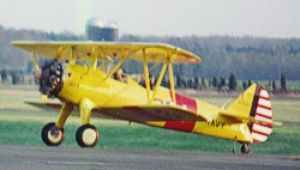 Flight Line Operations is divided into two sections. One handles the massivetask of parking the general aviation arrivals and the other controls aircraftmovements on the majority of the airport. Over the years practices have evolvedthat don’t seem terribly logical when looked at afresh, but tend to continuebecause they have become traditions. For example: Flight Line Ops has teams whohandle parking for the thousands of arrivals of ordinary mortals and teams tomarshal airplanes over the miles of taxiways, yet they do not set foot ontocertain areas of Papa taxiway. The volunteers at the showplace/vintage aircraftarea do their own marshalling and parking of aircraft, as do the volunteers inthe custom/homebuilt aircraft area and the warbird area. (The warbirds even havetheir own ground control frequency despite having the fewest airplanes of anysubgroup at AirVenture, but, as I remind my warbird friends, no one ever accused themof having small egos.) Each of those three groups jealously guard their turf andFlight Line Operations volunteers are careful to respect the boundary lines thathave formed over the years. Even with the separate sub organizations, thingsseem to flow pretty smoothly.
Flight Line Operations is divided into two sections. One handles the massivetask of parking the general aviation arrivals and the other controls aircraftmovements on the majority of the airport. Over the years practices have evolvedthat don’t seem terribly logical when looked at afresh, but tend to continuebecause they have become traditions. For example: Flight Line Ops has teams whohandle parking for the thousands of arrivals of ordinary mortals and teams tomarshal airplanes over the miles of taxiways, yet they do not set foot ontocertain areas of Papa taxiway. The volunteers at the showplace/vintage aircraftarea do their own marshalling and parking of aircraft, as do the volunteers inthe custom/homebuilt aircraft area and the warbird area. (The warbirds even havetheir own ground control frequency despite having the fewest airplanes of anysubgroup at AirVenture, but, as I remind my warbird friends, no one ever accused themof having small egos.) Each of those three groups jealously guard their turf andFlight Line Operations volunteers are careful to respect the boundary lines thathave formed over the years. Even with the separate sub organizations, thingsseem to flow pretty smoothly.
The parking teams for Flight Line Operations start working hard the Sunday priorto starting Wednesday. That is the first day of “Oshkosh rules”regarding arrivals. By the way, the NOTAM onAirVenture flight procedures isalready up; you can also get to it through EAA’sweb site or from the AirVenture siteitself. This of course presumes that the FAA’s site is up and running when youwant to access it – not a safe presumption. (In the past there has been a video explaining theprocedures, there is not one this year even though you may see a procedure toorder one. It does not exist.) If you want to volunteer before the show starts,don’t worry about a shortage of jobs to be done; you are needed.
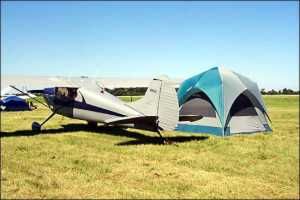 The parking crews spend the first several days funneling the arriving stream ofairplanes to parking in rows on the grass, keeping track of soft areas that maybog down an airplane, holes that can catch a landing gear and pilots who haven’tyet figured out how to follow rudimentary hand signals. More and more thevolunteers who staff Flight Line Operations are pilots themselves, which, in myopinion, has helped things run increasingly smoothly. Pilots have a pretty goodidea of what airplanes will and won’t do and what to expect from other pilots.
The parking crews spend the first several days funneling the arriving stream ofairplanes to parking in rows on the grass, keeping track of soft areas that maybog down an airplane, holes that can catch a landing gear and pilots who haven’tyet figured out how to follow rudimentary hand signals. More and more thevolunteers who staff Flight Line Operations are pilots themselves, which, in myopinion, has helped things run increasingly smoothly. Pilots have a pretty goodidea of what airplanes will and won’t do and what to expect from other pilots.
Once the field fills up with airplanes on Wednesday afternoon or Thursday theparking crew has to abruptly shift gears. A significant number of early arrivalsleave very early, often before the convention officially starts on Wednesday. Theparking crews then go into a hole-filling mode. The Wednesday start seems tohave actually benefited those who fly in. Last year aircraft parking was onlycompletely full for fairly short periods of time. It was possible to fly intoOshkosh itself – rather than a satellite airport – on Saturday last year,something that had not been possible for many prior years. The parking crewskeep track of open spots in the lines of parked airplanes and through aningenious system of marker flags and judicious use of walkie-talkies get newlyarrived airplanes into those holes.
Parking crews tend to work as teams, so often a new volunteer will be assignedto a team where it is easy to instruct and supervise the newbie.Traffic/marshalling volunteers work as individuals, out where the action is.Instruction and supervision is more difficult for that segment of Flight LineOperations, so volunteers tend to be selected with care and get some experiencebefore getting put onto what can be a firing line at the intersection of two orthree busy taxiways.
I spent some time with Fred Stadler directing traffic just east of the warbirdparking area. In a matter of minutes I was in the middle of a bevy of generalaviation singles and twins, a Spitfire, Albatross, Sea Fury, a dozen or sohomebuilts, an Extra 300 and some things I just didn’t recognize. The noise wascontinuous. For the first time in my life I was in a position where it was notpossible to tell where the airplanes were around me by listening. The sound camefrom all directions, swelled and multiplied and reverberated until it wasdisorienting in itself. I finally got a feel for what the handlers on aircraftcarriers experience every working day of their lives. In all candor, it wasexciting. I haven’t had a chance to fly some of the exotic airplanes that taxiedpast me, but being right next to them and communicating with the pilots was alot better than simply walking by them when they were parked somewhere.
There Is Something That Fits Your Interest
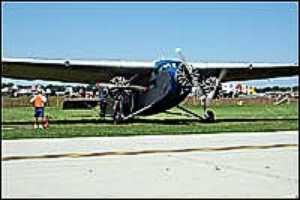 In putting this column together Ihad some conversations with Fred Stadler about various details. (Any mistakesare mine, not his.) Our talks ranged beyond parking and marshalling. I foundthat Fred went to Oshkosh just before the first of May to help out with themyriad of tasks that must be completed so that the AirVenture can again springforth, Brigadoon-like, this summer. He has greatly enjoyed working in the”maintenance” area. That is an inadequate name for the teams thatbuild the odd and wonderful things needed for the convention. Fred told me thatover the years he has learned a tremendous amount about how to make things fromthe team leaders as he’s built benches, buildings and other structures. He’sused the skills in making improvements on his own home.
In putting this column together Ihad some conversations with Fred Stadler about various details. (Any mistakesare mine, not his.) Our talks ranged beyond parking and marshalling. I foundthat Fred went to Oshkosh just before the first of May to help out with themyriad of tasks that must be completed so that the AirVenture can again springforth, Brigadoon-like, this summer. He has greatly enjoyed working in the”maintenance” area. That is an inadequate name for the teams thatbuild the odd and wonderful things needed for the convention. Fred told me thatover the years he has learned a tremendous amount about how to make things fromthe team leaders as he’s built benches, buildings and other structures. He’sused the skills in making improvements on his own home.
As I write this, there are already people who have traveled to Oshkosh to getthings ready. A significant number of them will stay from now through theconvention. That’s dedication.
If you want to help out in the weeks leading up to AirVenture, either go into theweb site or give a call to Paula Riley at theEAA, 920/426-4819. If youprocrastinate until you get to the convention, just walk up to one of thevolunteer centers. You’ll be welcomed and put to work.
As an aside, if you volunteer for three or four hours each day you are atAirVenture, it’s possible your trip will be tax deductible. Your tax advisor canfill you in on the details. While I know that there is no pilot in the world somercenary as to volunteer just to write off the trip to Oshkosh, it’s a nicelittle reward.
Give Of Yourself And Get More Back
While it may sound like a cheap preacher ona stump, those who volunteer seem to always be the ones who get the mostenjoyment from an aviation event. Contemporary society seems to encourage us tosit around and demand to be entertained. It’s funny how the entertainment isn’tnearly as enjoyable for those who don’t do anything to get it. When we are apart of the show in some fashion, we get much more out of it. I think that youwill find that you’ll get more out of AirVenture, or even your local weekendflight breakfast, if you get involved, get into the middle of it, rather thanjust wander through as another gawker.
See you next month.


































